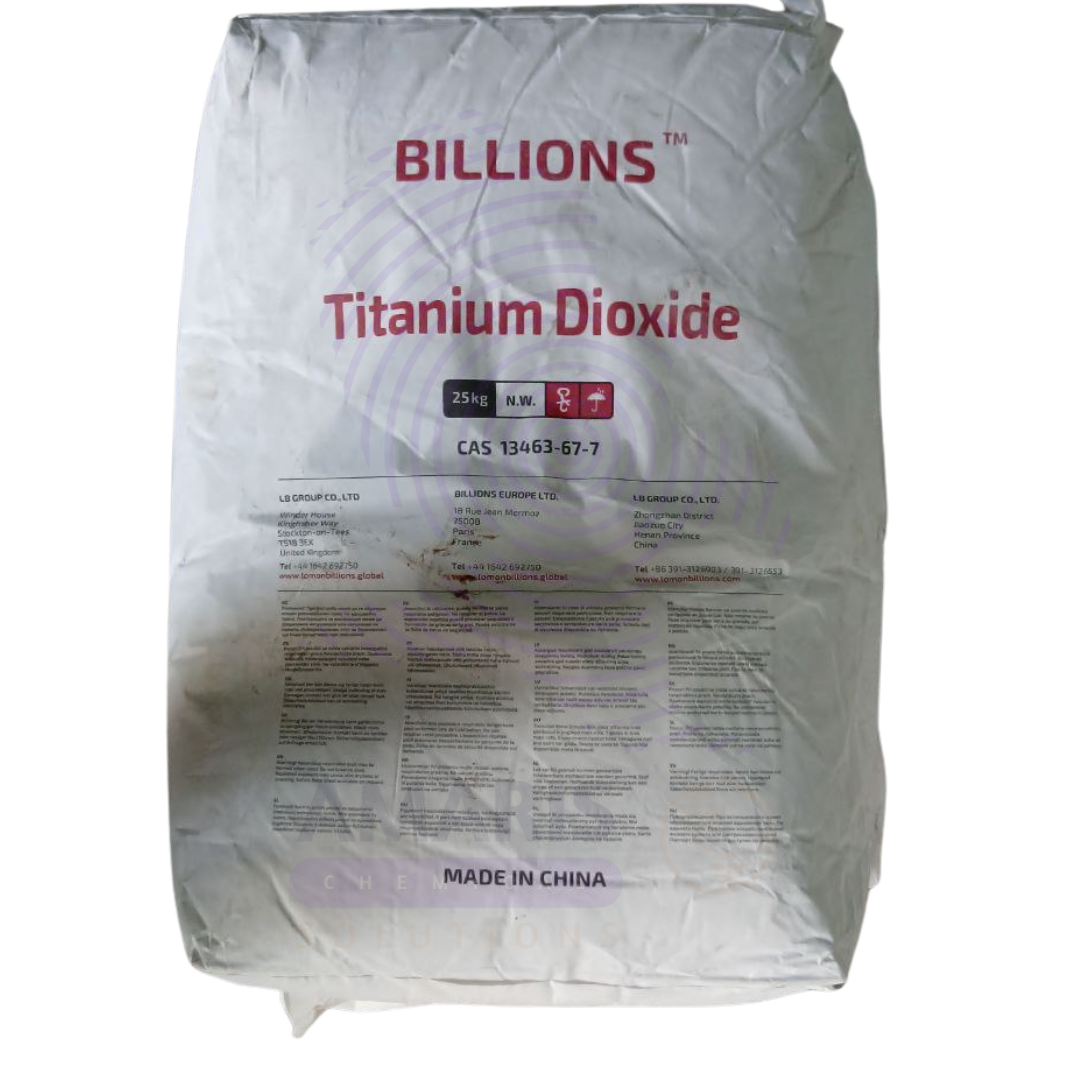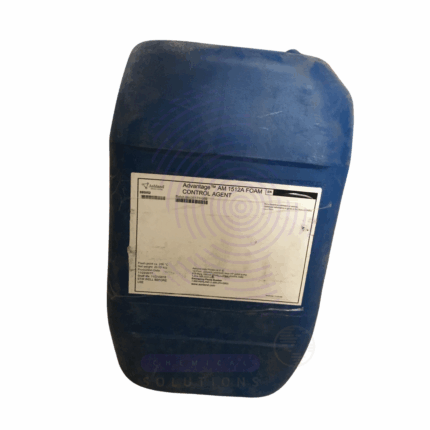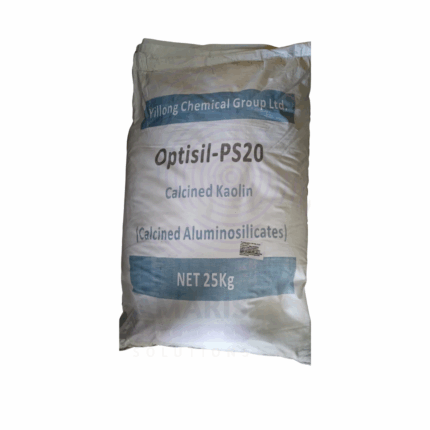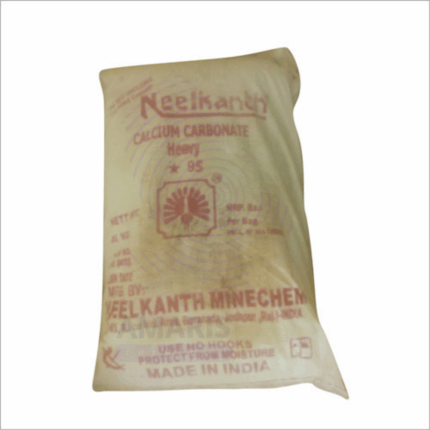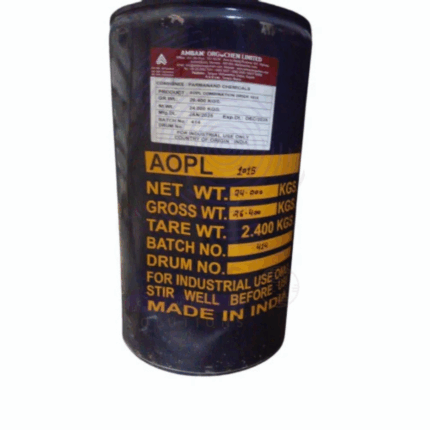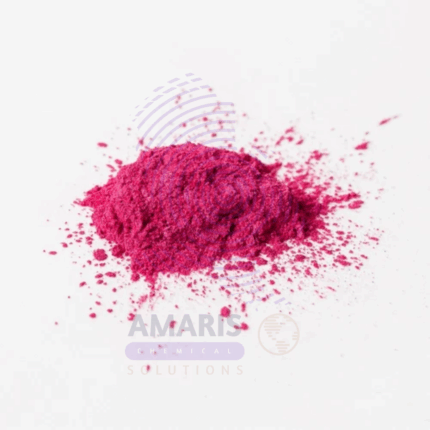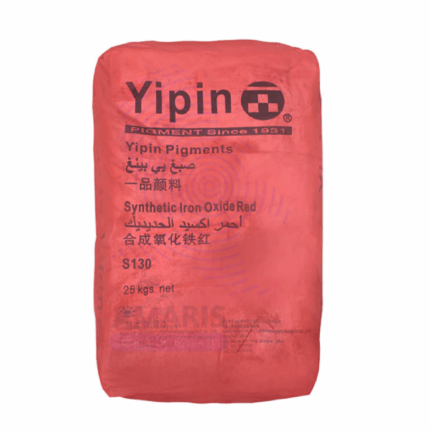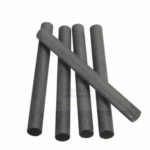
Electrode Carbon Rod
$ 13.99 Original price was: $ 13.99.$ 13.87Current price is: $ 13.87.
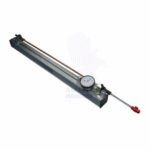
Linear expansion apparatus
$ 48.08 Original price was: $ 48.08.$ 47.99Current price is: $ 47.99.
Titanium Dioxide
Whatsapp Order
Titanium Dioxide (TiO₂) is a naturally occurring oxide of titanium known for its exceptional brightness and high refractive index. It is one of the most widely used white pigments in the world due to its excellent opacity, UV resistance, and chemical stability. Available in various crystalline forms—mainly rutile and anatase—it is used across numerous industries including paints, plastics, paper, cosmetics, and food. Industrial grades are often surface-treated to enhance performance in specific applications.
Description
Table of Contents
Toggle
Titanium Dioxide
Primary Uses
- Paints & Coatings Industry
- White Pigment: Provides opacity, brightness, and coverage in decorative, industrial, automotive, and marine coatings.
- UV Protection: Protects underlying surfaces and coatings from photodegradation.
- Color Retention: Enhances weather resistance and maintains paint appearance over time.
- Plastics Industry
- Colorant: Adds whiteness and opacity to plastic products like PVC pipes, window frames, films, containers, and packaging.
- Thermal Stability: Improves heat resistance and longevity in thermoplastics and thermosets.
- UV Resistance: Protects polymers from degradation due to sunlight exposure.
- Paper Industry
- Coating Pigment: Enhances brightness, smoothness, and opacity in high-quality papers and boards.
- Filler: Increases paper bulk and printability, particularly in specialty and coated papers.
- Cosmetics & Personal Care
- Sunscreens: Used as a physical UV filter (especially micronized TiO₂) in SPF formulations.
- Pigment: Provides opacity and brightness in foundations, creams, powders, and lotions.
- Non-Irritant Base: Suitable for sensitive skin due to its inert and non-comedogenic nature.
- Food Industry (Food Grade – E171)
- Food Whitening Agent: Adds brightness and opacity to chewing gum, candies, bakery coatings, and toothpaste.
- Color Stabilizer: Helps maintain color consistency in processed foods and pharmaceuticals.
Secondary Uses
- Pharmaceuticals
- Tablet Coating Agent: Enhances tablet appearance and provides UV protection for light-sensitive drugs.
- Capsules & Gels: Used for whitening and aesthetic appeal in gel capsules.
- Ceramics & Glass
- Opacifier: Adds whiteness and opacity in glazes and ceramic finishes.
- Glass Additive: Improves refractive index and UV filtering in specialty glass applications.
- Textiles
- Pigment Printing: Adds opacity and brightness in printed or dyed fabrics.
- Fiber Additive: Improves UV resistance and colorfastness in synthetic fibers.
- Inks
- Printing Inks: Adds brightness and opacity in packaging, labels, and publications.
- UV Curing Inks: Enhances performance in high-opacity ink formulations for industrial printing.
- Photocatalysis & Environmental Uses
- Air & Water Purification: In anatase form, acts as a photocatalyst to break down pollutants under UV light.
- Self-Cleaning Surfaces: Applied in glass and ceramic coatings to facilitate dirt decomposition.
- Antibacterial Coatings: Used in surfaces where antimicrobial activity is desired.
- Metallurgy & Welding
- Flux Coating: Used in welding electrodes as a flux component to stabilize arc and improve weld quality.
KEY PRODUCT FEATURES
1. Basic Identification Attributes
- Chemical Name (IUPAC): Titanium(IV) oxide
- Common/Trade Name: Titanium Dioxide
- CAS Number: 13463-67-7
- HS Code: 3206.11.00 (Pigment grade)
- Synonyms: TiO₂, titania, rutile, anatase, E171 (food grade)
2. Physical & Chemical Properties
- Physical State: Powder (fine or ultrafine)
- Color & Odor: White, odorless
- Crystal Forms: Rutile (high refractive index, more stable) and Anatase (higher photocatalytic activity)
- Melting Point: 1,843 °C
- Density: 3.9–4.2 g/cm³ (rutile), 3.8–3.9 g/cm³ (anatase)
- Refractive Index: ~2.7 (rutile), ~2.5 (anatase)
- Solubility: Insoluble in water; soluble in concentrated acids
3. Safety & Hazard Attributes
- GHS Classification: Not classified as hazardous in solid form; inhalable dust may be hazardous
- Toxicity: Considered low toxicity; concern exists over inhalation of fine particles (especially nanoparticles)
- Exposure Limits:
- OSHA PEL: 15 mg/m³ (total dust)
- ACGIH TLV: 10 mg/m³ (inhalable fraction)
4. Storage & Handling Attributes
- Storage Conditions: Store in dry, well-ventilated area; avoid moisture contamination
- Container Type: Multi-ply paper bags, FIBCs, or drums
- Shelf Life: Stable indefinitely under proper storage
- Handling Precautions: Avoid generating dust; use dust extraction and PPE where necessary
5. Regulatory & Compliance Attributes
- Complies with REACH and OSHA standards for industrial use
- Food-grade form (E171) approved by Codex, USP, FCC, and European Food Safety Authority (EFSA) (note: banned for food use in some jurisdictions like the EU)
- Pharmaceutical grades comply with USP, BP, and EP standards
- Listed in TSCA (USA), DSL (Canada), and other global inventories
- Subject to labeling requirements depending on particle size (e.g., nanoparticles)
6. Environmental & Health Impact
- Biodegradability: Inorganic; does not biodegrade
- Ecotoxicity: Low for pigment-grade; nanoparticle form may affect aquatic life
- Bioaccumulation: Not significant in pigment form
- Photocatalytic Risk: Anatase TiO₂ may generate reactive oxygen species under UV light, which can impact ecosystems
SAFETY HANDLING PRECAUTIONS
Safety Handling Precautions
- PPE Required: Dust mask, gloves, goggles recommended for bulk handling
- Handling Guidelines: Use in well-ventilated areas; minimize airborne dust generation
- Storage Measures: Keep containers sealed and dry; avoid contamination with incompatible substances
First Aid Measures
- Inhalation: Move to fresh air; seek medical attention if respiratory irritation occurs
- Skin Contact: Wash with soap and water
- Eye Contact: Rinse with water for several minutes; seek medical attention if irritation persists
- Ingestion: Rinse mouth; seek medical advice if large quantity ingested
Firefighting Measures
- Fire Hazards: Non-flammable; stable under fire conditions
- Extinguishing Media: Use media appropriate for surrounding fire
- Hazardous Combustion Products: None specific; may release metal oxide fumes if involved in fire
Related products
Anti Foam
Anti foams are chemical additives designed to reduce or prevent the formation of foam in industrial processes, manufacturing, and various formulations. Foam can interfere with operations such as mixing, filling, pumping, and heat transfer, leading to reduced efficiency or defects in products. Anti foams work by destabilizing foam bubbles, causing them to coalesce and collapse rapidly. They are widely used in industries including food and beverage, pharmaceuticals, wastewater treatment, paints and coatings, and chemical manufacturing. Different types of anti foams include silicone-based, mineral oil-based, and organic polymer-based formulations, chosen according to the specific application and process conditions.
Calcined Kaolin
$ 1.20
Calcined Kaolin is a fine, white to off-white powder produced by heating natural kaolin clay to high temperatures (typically between 600°C and 900°C) in a controlled process called calcination. This thermal treatment removes chemically bound water, changes the crystalline structure, and enhances the physical and chemical properties of kaolin. The resulting product exhibits increased brightness, hardness, and opacity, making it highly valuable as a functional additive and filler in numerous industrial applications. Calcined Kaolin is widely used in coatings, ceramics, plastics, rubber, paper, and paint industries to improve durability, brightness, and performance.
Calcium Carbonate Heavy
Calcium Carbonate Heavy is a high-density, finely ground, natural mineral primarily composed of calcium carbonate (CaCO₃). Known for its higher bulk density compared to regular grades, this filler is widely used in applications requiring enhanced weight, opacity, and strength. It is commonly employed as a functional filler and extender in industries such as plastics, paints, coatings, adhesives, rubber, paper, and construction materials. Its inert nature, whiteness, and particle size distribution make it suitable for improving mechanical properties and surface finish, while also offering cost efficiency by replacing more expensive raw materials.
Cobalt Drier
Cobalt Drier is a metal-based drying agent primarily composed of cobalt salts (commonly cobalt octoate or cobalt naphthenate). It is widely used as a catalyst to accelerate the drying (oxidative curing) of oils, alkyd resins, and varnishes in coatings and paints. This drier promotes polymerization and cross-linking of unsaturated fatty acids in drying oils upon exposure to air, significantly reducing drying times and improving film hardness and durability. Cobalt driers are essential additives in industrial, decorative, and automotive coatings due to their effectiveness at low concentrations and compatibility with various resin systems.
Green Pigment
Green Pigment is a concentrated dispersion of green pigment particles in a suitable carrier, designed for use in a variety of industrial and commercial applications. Known for its vivid green color and excellent stability, this pigment offers good resistance to heat, light, and chemicals. It is widely employed in plastics, coatings, inks, and other manufacturing processes where vibrant, durable green coloration is required.
Manganous Dihydrogen Phosphate
Manganous Dihydrogen Phosphate is an inorganic manganese compound with the formula Mn(H₂PO₄)₂. It is typically encountered as a hydrated crystalline solid that is soluble in water. This compound serves as a valuable source of manganese and phosphorus in agricultural and industrial applications. It is primarily used as a micronutrient fertilizer component, an additive in animal feed, and a reagent in chemical syntheses. Its high solubility makes it effective for foliar sprays and soil applications to correct manganese deficiencies in crops.
Raspberry Red Pigment
Raspberry Red Pigment is a concentrated dispersion of synthetic red pigment particles formulated to deliver a rich raspberry-red color. It offers excellent lightfastness, heat stability, and chemical inertness, making it ideal for applications in paints, coatings, plastics, inks, and specialty industrial uses. This pigment ensures consistent color strength and durability across various substrates and manufacturing processes.
Red Oxide
Red Oxide is a high-purity synthetic iron oxide pigment that offers a deep red hue with excellent opacity, dispersibility, and weather resistance. It is widely used in the coatings, construction, plastics, rubber, ceramic, and ink industries for its color stability, non-toxicity, and resistance to UV light and chemicals. Red Oxide S130 is finely milled for consistent performance and is suitable for both indoor and outdoor applications. Its chemical inertness and thermal stability make it ideal for demanding environments requiring long-lasting coloration.


 Preservatives(food)
Preservatives(food) Flavor Enhancers
Flavor Enhancers Acidulants
Acidulants Sweeteners
Sweeteners Antioxidants
Antioxidants Colorants(food)
Colorants(food) Nutraceutical Ingredients (food)
Nutraceutical Ingredients (food) Nutrient Supplements
Nutrient Supplements Emulsifiers
Emulsifiers
 Collectors
Collectors Dust Suppressants
Dust Suppressants Explosives and Blasting Agents
Explosives and Blasting Agents Flocculants and Coagulants
Flocculants and Coagulants Frothers
Frothers Leaching Agents
Leaching Agents pH Modifiers
pH Modifiers Precious Metal Extraction Agents
Precious Metal Extraction Agents
 Antioxidants(plastic)
Antioxidants(plastic) Colorants (Pigments, Dyes)
Colorants (Pigments, Dyes) Fillers and Reinforcements
Fillers and Reinforcements Flame Retardants
Flame Retardants Monomers
Monomers Plasticizers
Plasticizers Polymerization Initiators
Polymerization Initiators Stabilizers (UV, Heat)
Stabilizers (UV, Heat)
 Antifoaming Agents
Antifoaming Agents Chelating Agents
Chelating Agents Coagulants and Flocculants
Coagulants and Flocculants Corrosion Inhibitors
Corrosion Inhibitors Disinfectants and Biocides
Disinfectants and Biocides Oxidizing Agents
Oxidizing Agents pH Adjusters
pH Adjusters Scale Inhibitors( water)
Scale Inhibitors( water)
 Antioxidants(cosmetic)
Antioxidants(cosmetic) Emollients
Emollients Fragrances and Essential Oils
Fragrances and Essential Oils Humectants
Humectants Preservatives
Preservatives Surfactants(cosmetic)
Surfactants(cosmetic) Thickeners
Thickeners UV Filters
UV Filters
 Fertilizers
Fertilizers Soil Conditioners
Soil Conditioners Plant Growth Regulators
Plant Growth Regulators Animal Feed Additives
Animal Feed Additives Biostimulants
Biostimulants Pesticides (Herbicides, Insecticides, Fungicides)
Pesticides (Herbicides, Insecticides, Fungicides)
 Active Pharmaceutical Ingredients (APIs)
Active Pharmaceutical Ingredients (APIs) Excipients
Excipients Solvents(pharmaceutical)
Solvents(pharmaceutical) Antibiotics
Antibiotics Antiseptics and Disinfectants
Antiseptics and Disinfectants Vaccine Adjuvants
Vaccine Adjuvants Nutraceutical Ingredients (pharmaceutical)
Nutraceutical Ingredients (pharmaceutical) Analgesics & Antipyretics
Analgesics & Antipyretics
 Analytical Reagents
Analytical Reagents Solvents(lab)
Solvents(lab) Chromatography Chemicals
Chromatography Chemicals Spectroscopy Reagents
Spectroscopy Reagents microbiology-and-cell-culture-reagents
microbiology-and-cell-culture-reagents Molecular Biology Reagents
Molecular Biology Reagents Biochemical Reagents
Biochemical Reagents Inorganic and Organic Standards
Inorganic and Organic Standards Laboratory Safety Chemicals
Laboratory Safety Chemicals Specialty Laboratory Chemicals(Special Laboratory Equipment)
Specialty Laboratory Chemicals(Special Laboratory Equipment)
 Demulsifiers
Demulsifiers Hydraulic Fracturing Fluids
Hydraulic Fracturing Fluids Scale Inhibitors(oil)
Scale Inhibitors(oil) Surfactants(oil)
Surfactants(oil) Drilling Fluids
Drilling Fluids
 Dyes and Pigments
Dyes and Pigments Bleaching Agents
Bleaching Agents Softening Agents
Softening Agents Finishing Agents
Finishing Agents Antistatic Agents
Antistatic Agents
 Admixtures
Admixtures Waterproofing Agents
Waterproofing Agents Sealants and Adhesives
Sealants and Adhesives Curing Compounds
Curing Compounds Concrete Repair Chemicals
Concrete Repair Chemicals Anti-Corrosion Coatings
Anti-Corrosion Coatings
 Surfactants(cleaning)
Surfactants(cleaning) Builders
Builders Enzymes
Enzymes Solvents (Cleaning)
Solvents (Cleaning) Fragrances
Fragrances
 Electronic Chemicals
Electronic Chemicals Catalysts
Catalysts Lubricants
Lubricants Photographic Chemicals
Photographic Chemicals Refrigerants
Refrigerants Automotive chemicals
Automotive chemicals Pyrotechnic Chemicals
Pyrotechnic Chemicals
 Biodegradable Surfactants
Biodegradable Surfactants Bio-based Solvents
Bio-based Solvents Renewable Polymers
Renewable Polymers Carbon Capture Chemicals
Carbon Capture Chemicals Wastewater Treatment Chemicals
Wastewater Treatment Chemicals
 Pigments
Pigments Solvents(paint)
Solvents(paint) Specialty Coatings
Specialty Coatings Binders/Resins
Binders/Resins Additives
Additives Driers
Driers Anti-Corrosion Agents
Anti-Corrosion Agents Functional Coatings
Functional Coatings Application-Specific Coatings
Application-Specific Coatings
 Fresh Herbs
Fresh Herbs Ground Spices
Ground Spices Whole Spices
Whole Spices Spice Blends
Spice Blends Dried Herbs
Dried Herbs
 Leavening Agents
Leavening Agents Dough Conditioners
Dough Conditioners Flour Treatments
Flour Treatments Fat Replacers
Fat Replacers Decoratives
Decoratives Preservatives(baking)
Preservatives(baking)
 Plasticizers & Softeners
Plasticizers & Softeners Reinforcing Agents
Reinforcing Agents Adhesion Promoters
Adhesion Promoters Vulcanizing Agents
Vulcanizing Agents Antidegradants
Antidegradants Blowing Agents
Blowing Agents Fillers & Extenders
Fillers & Extenders Accelerators & Retarders
Accelerators & Retarders